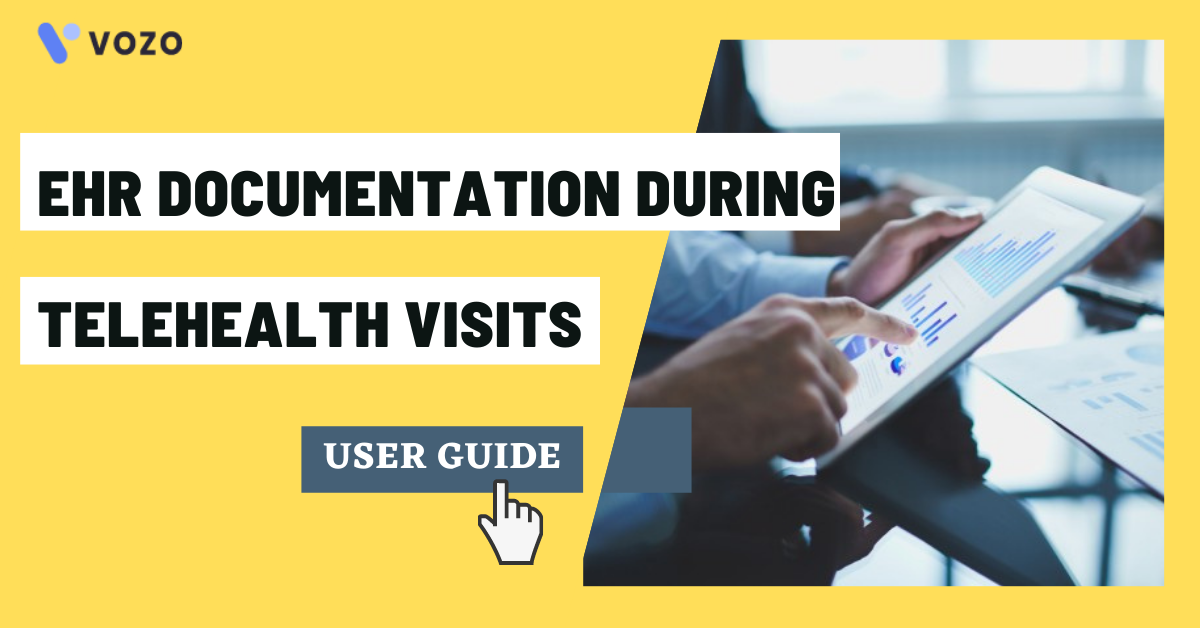EHR Documentation During Telehealth Visits: User Guide
Today, the adoption of telehealth is the great and best option for both healthcare providers and patients for quality care. But for the clinicians, effective EHR documentation is considered to be a complex task during the telehealth visits. Today, health IT experts are looking for smart ways to streamline the EHR documentation process. In this article, we provide you the best guideline for effective documentation during telehealth virtual visits.
EHR Documentation Process
How documentation helps providers? During a patient encounter, when clinicians record patient health data in the form of physician notes, the EHR documentation helps them to share patient medical data among other health providers.
However, this documentation process creates the greatest burnout for clinicians. According to the American Medical Association, the clinician burnout rate is approximately around 44% – greater than the burnout rates in other professions. At the same time, the adoption of telehealth visits reached great heights in 2020 due to COVID-19. This forced healthcare providers all over the U.S healthcare system to optimize their EHR documentation process.
EHR Telehealth Integration
Here comes the first and best solution to ease the documentation process. Integrating telehealth into EHR and patient portal software can ultimately reduce clinician burnout and make documentation simple & easy. If patients have easy access to their healthcare via telehealth solutions, it also reduces travel for patients and 24/7 health access. By integrating telehealth and EHR, it creates a great opportunity for the providers to understand their patient’s preference and needs.
It is a complex process for both healthcare providers and patients to use the telehealth visits – for consultation and the EHR software for health data access at the same time. An EHR integration solution will eliminate this kind of complex process – it does not require switching between documentation and video screens. Thus, it reduces the clinician burden at a great level.
The EHR integration process automates the patient data entry – this eliminates the need to enter the same patient health data more than once. What makes this possible? After the telehealth visit, the healthcare providers can create a summary of the patient visits. Without the help of integration, there is a need for physicians to enter the same data again into EHR and the disparate telehealth solution.
Here telehealth offers a huge chance for patients to take care of their health at their convenience, anywhere at home or work. Patients can also able to schedule their future appointment by staying connected with the front desk via video chat after completing their current visit.
As the telehealth system was integrated on the same EHR platform, the users can attend the video visit and remain within the same EHR. By integrating both, the advanced software like Vozo will make it the floating window of the video. So the user can easily continue to document with the window open and he/she can toggle the floating window and place it wherever possible with the same screen.
RELATED: 5 Pro Tips To Improve Security In Telehealth
1. Making The Right Use Of The Second Screen Option
Even though telehealth integration is becoming more popular and beneficial across healthcare providers, the adoption rate will not than much high when compared to other integration tools. Here comes the usage of a second screen like a laptop or tablet to boost the EHR documentation.
How this second screen method can be used? Providers can use the primary screen for the telehealth camera and EHR & use the second screen for seeing patients in real-time. As the camera and EHR are placed on the same screen, providers can easily carry on with the documentation process and look at patients via camera if necessary.
2. Voice Recognition Technology Is On The Rise
As we discussed in our previous blog about ‘’the role of AI voice assistants in clinical documentation process’’, this kind of advanced voice recognition technology helps healthcare industries to overcome the challenges with EHR documentation easily.
The voice assistants can ultimately reduce the burden of patient data entry from the healthcare team. By eliminating the manual data entry process, this voice recognition system serves to be an all-time favorite strategy to reduce the documentation burden.
Final Thoughts
As COVID-19 is seriously impacting the whole healthcare industry, overcoming the documentation challenges became nearly impossible. Today, telehealth visits are expected to remain a popular choice among patients and healthcare providers for accessing and delivering quality care on time remotely. We can also expect the rapid growth of EHR documentation during telehealth visits today and also in the future healthcare system.
Ready to get started with EHR telehealth integration?
About the author

With more than 4 years of experience in the dynamic healthcare technology landscape, Sid specializes in crafting compelling content on topics including EHR/EMR, patient portals, healthcare automation, remote patient monitoring, and health information exchange. His expertise lies in translating cutting-edge innovations and intricate topics into engaging narratives that resonate with diverse audiences.













